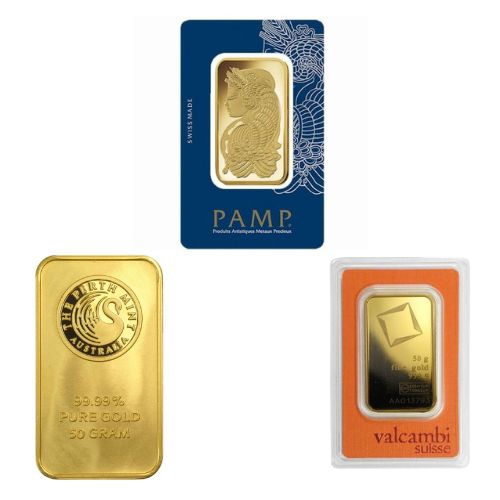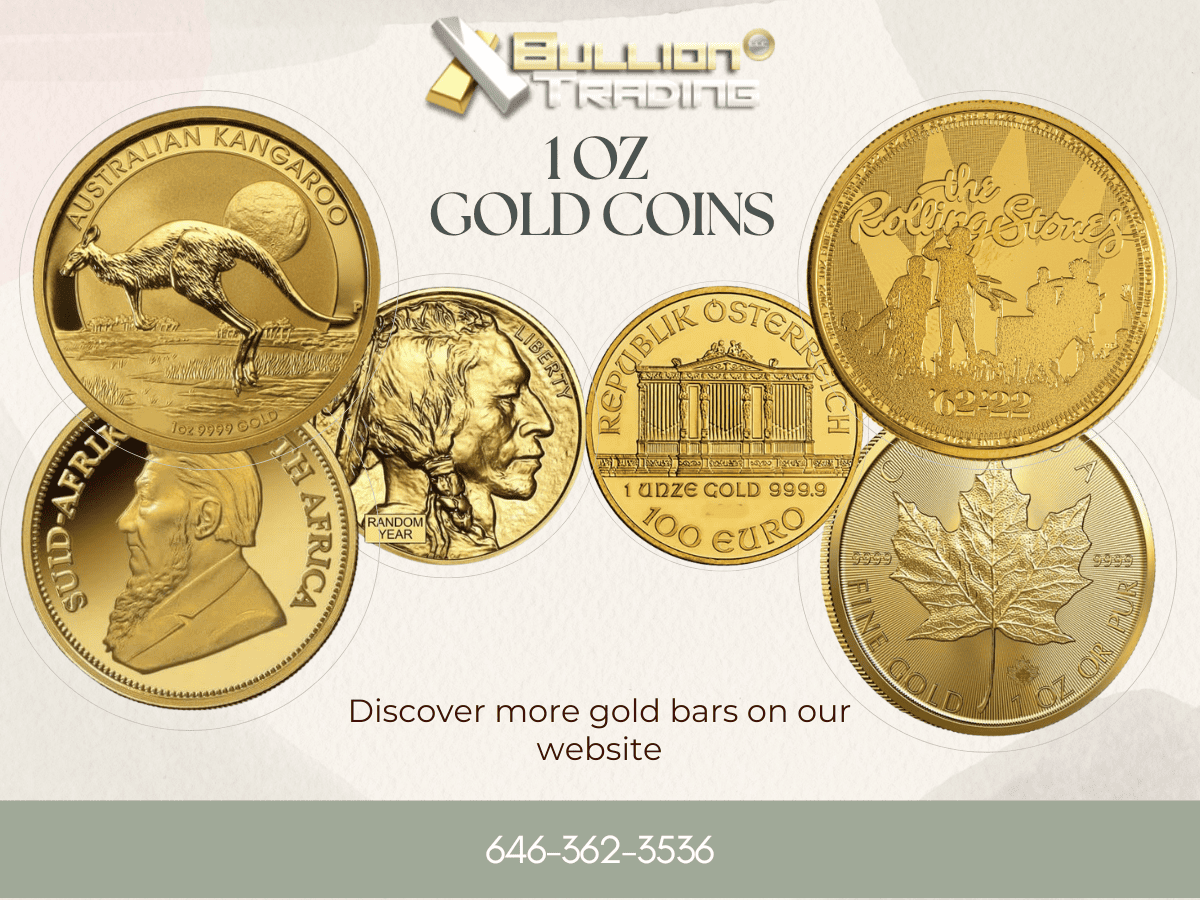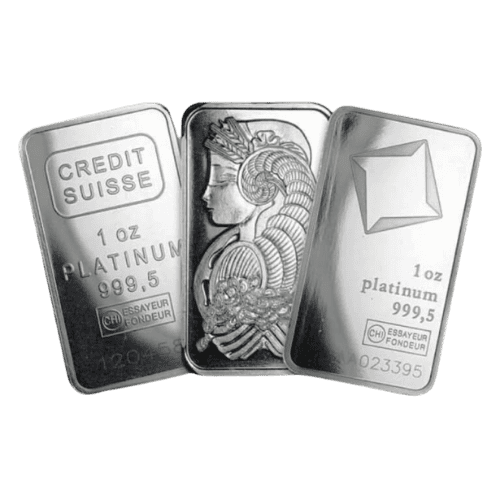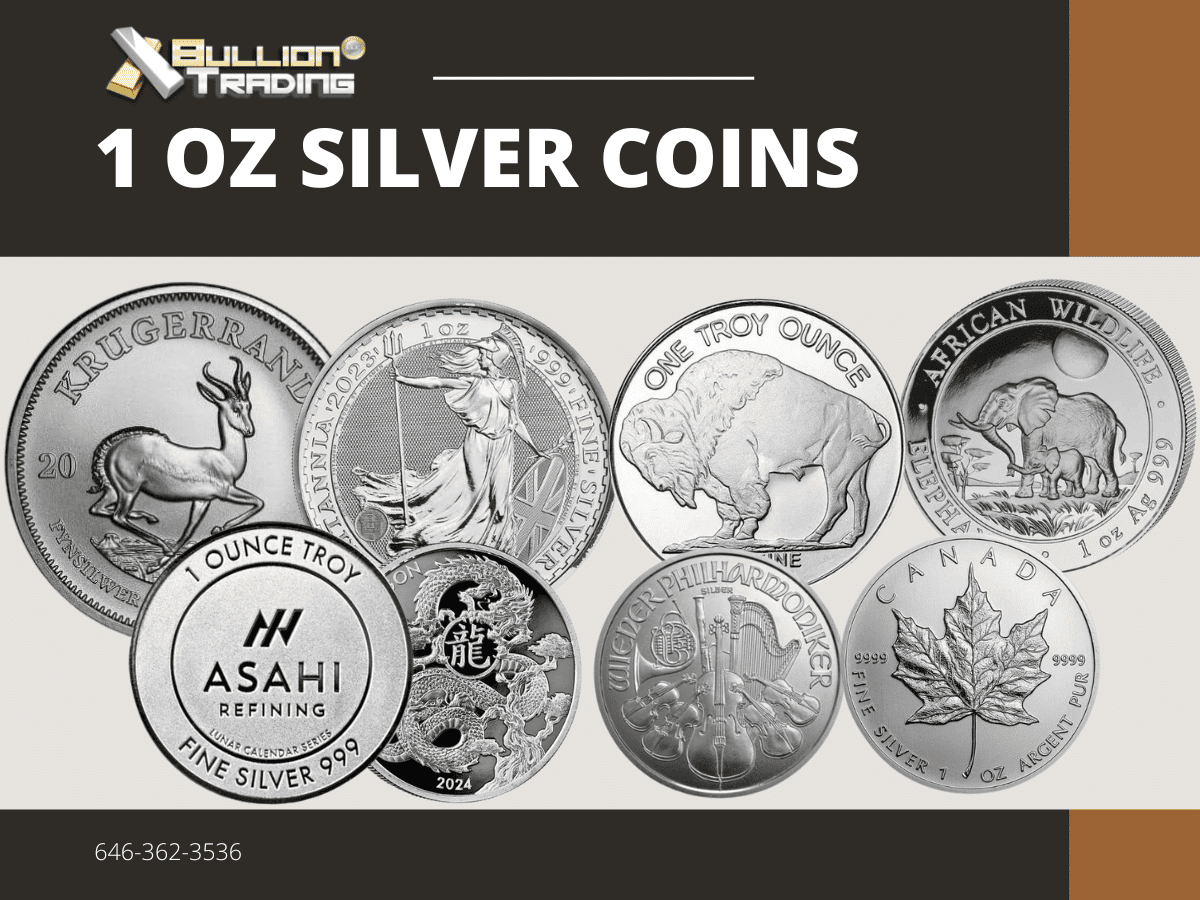Gold coins and bars may come with stamps, purity marks, and serial numbers, but this doesn’t mean the bullion in question is real gold. For example, cases of low-quality gold products that have falsified high fineness levels have been reported. Furthermore, gold-plated fake bullion coins and bars filled with heavy metals like lead underneath the plating. So, how to know if gold is fake or real?
To know the actual value of the bullion coin or bar you’re buying, you must test gold’s authenticity. We have created this guide to help you secure your investment, know the exact value, and make sure you’re getting the exact amount of gold you’re paying for. Read about straightforward tests you can perform at home to answer your question: How to tell if gold is real?
Testing Size and Weight
This test is suitable for gold coins because it involves checking the size and the weight of the coin you have purchased. Gold is one of the heaviest metals on earth with unique properties that are difficult to replicate. This means that fake bullion coins made from other metals will be larger compared to real gold coins with the same weight.
How to test gold Size and Weight? For instance, a fake Britannia one-ounce gold coin would have to be wider and thicker to have the same weight as the real coin. On the same note, a fake Britannia coin with the same thickness and diameter as the real one would be a lot lighter. This means that knowing the exact weight, diameter, and thickness of the gold coin you’re buying is crucial in helping you to identify fake gold.
The Ping/Sound Test
How to tell if gold is real with the sound test? Genuine gold makes a pinging high pitched sound when struck with another metal. To perform this test, place the gold coin in the pit of your index finger. Strike it with another metal or currency coin. Gold coins make a lengthy high-pitched sound when struck. On the contrary, base metals make a dull, heavy, short sound when struck.
How to Tell If Gold is Real with a Magnet? – Magnet Test
 The magnetic test is another simple authentication way to test gold at home. Gold is non-magnetic as opposed to other metals. Real gold bullion coins, bars, and jewelry don’t stick-on magnets. If you have a strong magnet at home, try using it to pick any golden item. Gold coins, bars, and items that stick to magnets contain a high percentage of other metals.
The magnetic test is another simple authentication way to test gold at home. Gold is non-magnetic as opposed to other metals. Real gold bullion coins, bars, and jewelry don’t stick-on magnets. If you have a strong magnet at home, try using it to pick any golden item. Gold coins, bars, and items that stick to magnets contain a high percentage of other metals.
Nevertheless, gold is not the only non-magnetic metal because counterfeits can also pass the test. So, it shouldn’t have any movement during the gold testing. If it shows any indication, you must realize it is not real gold but a fake gold, which contains limited gold on the product’s surface. So, how to know if gold is real? Experts recommend that the magnet test should be used alongside other tests.
The Nitric Acid Test
The nitric acid test gold is one of the riskiest of the test because you can damage your gold if it’s mixed with other metals. This test is only suitable for pure gold bullion coins and bars.How to tell if gold is real or fake with the nitric acid test? Testing gold is based on the fact that it is resistant to corrosion and oxidation. Pure gold is not tarnished or dissolved by strong acids like nitric acid.
Nitric acid is sold in different concentrations depending on the purity level of the gold bullion you’d like to test. For example, if you buy nitric acid marked 24-carat gold and use it to test your 24-carat gold bullion, and it melts, it means it is not real gold at all, or it’s mixed with other lower metals.
The Magnifying Glass Test
 The magnifying glass test is another simple test you can perform at home if you want to know whether your gold is authentic. To perform this test you only need a magnifying glass and the bullion coin or bar to be tested. This test requires you to closely examine gold items with a magnifying glass while looking out for special markers. The signs you should look for include:
The magnifying glass test is another simple test you can perform at home if you want to know whether your gold is authentic. To perform this test you only need a magnifying glass and the bullion coin or bar to be tested. This test requires you to closely examine gold items with a magnifying glass while looking out for special markers. The signs you should look for include:
- Signs of Discoloration: Gold doesn’t react with any chemicals. Therefore, when authentic gold bullion coins and bars are observed under a magnifying glass, you don’t see signs of discoloration. If there’re spots and discoloration on your gold bullion, then it’s a sign your bullion coin or bars may be fake.
- Luster and Color: Real gold is soft with a beautiful yellow color that is not shiny. Gold coins and bars that are too shiny, too yellow, or reddish in appearance are not pure.
- The Purity Hallmark: This is one of the most important marks you should look for when evaluating the value of your gold. Purity levels are normally inscribed on gold coins and bars in terms of millesimal fineness or the karat system. For instance, 4 carats or .999 fine gold should have a mark of fineness somewhere on the coin, bar, or jewellery.
How to test gold is real or fake? Engraving of fineness levels can be found on the back of gold coins and bars. For jewellery, the 24K mark or the .999 fineness levels can be found on inner parts. It’s noteworthy that the engravings found on bullion coins and bars could also be fake. This is the reason further testing is necessary even after locating purity hallmarks.
Additional signs you should look for include country-specific hallmark standards. These include things like Assayer’s number, Assayer’s mark, and the hallmarking center’s mark. A hallmark can sometimes indicate that a gold item is not made entirely of pure gold. GP, GF, and GEP are common letters used to indicate gold plating. You should also look for the year of marking which is normally expressed in purity grade. The year is inscribed in alphabetic letters approved by the BIS and the producer of the jewel.
When examining purity markers, you should avoid products with the following stamps:
- HGP-Heavy (Hard) Gold Plate
- GF-Gold Filled
- GP-Gold Plated
- G.E-Hydrostatic Gold Electroplating
- E.P-Gold electroplating
- .925-Sterling Silver
- 1/20-1/20 gold-filled gold
Knowing the Source
There’re many companies out there selling precious metal bullion coins and bars which they claim to be from internationally trusted sources like the US Mint, the Austrian Mint, the Australian Mint, the Shenyang Mint, the South African Mint, and the Royal Canadian Mint.
Buying gold bullion coins and bars from trusted sources like the ones mentioned above eliminates major security concerns. Before buying bullion coins and bars from a private company or in the brick-and-mortar world, there’re key factors you should consider. These factors include:
- Can the company be contacted easily?
- Do the representatives talk to customers first to understand their financial needs before engaging them?
- Do the representatives push customers to buy?
- How long does the company you intend to deal with been in operation?
- Does the company have positive reviews online?
The Scratch Test
 Ceramic scratch test is another way you can use to determine the authenticity of your gold bullion coins and bars. To do the test, you need one of the following; a jeweler’s stone, an unglazed ceramic plate, or an unglazed porcelain tile. Ceramic plates and porcelain tiles can be bought easily online or at a maintenance store.
Ceramic scratch test is another way you can use to determine the authenticity of your gold bullion coins and bars. To do the test, you need one of the following; a jeweler’s stone, an unglazed ceramic plate, or an unglazed porcelain tile. Ceramic plates and porcelain tiles can be bought easily online or at a maintenance store.
This test should be performed carefully because if you’re reckless you could damage your gold. Take the golden item you want to test and carefully rub it against a ceramic plate or porcelain. Press the item with enough pressure to leave a scratch without causing serious damage to the item.
Next, examine the color of the mark on the material left on the gold item. If the gold bullion coin you’re testing is real, then you’ll see golden, yellow color. Scratch marks that produce a black streak are an indication that you dealing with fake gold.
The Skin Test
The skin discoloration test is another easy way to tell the purity levels of gold. Real pure gold doesn’t stain or discolor your skin. On the contrary, wearing fake gold jewelry will discolor your skin after a while. To perform the skin test, all you need to do is to hold the gold item in your hand for a few minutes.
If the gold bullion coin or bar is fake, it will react with the sweat on your skin. Your skin will respond by turning black or green. This is an indication that your skin reacted with other alloy metals that are coated with gold. Authentic gold with a decent purity level doesn’t react with the human skin. Before doing the test, make sure you don’t have any makeup on your skin.
The Makeup Test
Most of the people seeking answer for how to know gold is real or fake. To be clear, make up test is another method to check whether it is fake gold or not. To test gold, you’ll need liquid powder and foundation. Apply a thin layer of foundation on your forehead or at the back of your hand. On top of the foundation apply a thin layer of powder. Wait until the foundation dries. Then press the gold on your skin while rubbing it against the foundation lightly.
If the item leaves a black trail on your skin, then it’s more likely that it’s authentic gold. Failure of the black streak to appear is a sign that your gold is fake or probably made of another metal, or gold plated.
How to Test Gold is Real or Fake ? – The Vinegar Test
Performing the vinegar test requires you to have some white vinegar and a glass container or a dropper. Place the gold bullion you intend to test on a clean white towel. Using a dropper, sprinkle some vinegar on the gold. If the color of gold changes, then it’s not pure gold. The color of gold remaining the same after the vinegar is added is not considered to be a fake gold. If you are thinking of testing in a cup, then, firstly, fill it with white vinegar, hold it for around 10-15 minutes, replace the gold, and clean it. If the gold started shining, then it is absolute gold. Otherwise, it is fake gold.
The Float Test
The float test is another very simple test that can help you establish the authenticity of gold bars at a glance. Place your golden item into a cup of water or bowl. If the gold is real, it will sink to the bottom of the container immediately. Pure gold is heavy because it’s dense with a density of (19.32g/ml).
If the golden item you testing floats or hovers above the container, then it’s a gold-plated item or a fake. The reason is that the density of gold items varies with the karat or purity levels. For instance, a 14K gold item contains 12.9 to 14.6g/ml of gold. An 18k gold bullion coin or bar contains 15.2 to 15.9g/ml of gold, while a 22k item has 17.7 to 17.8/ml of gold. The float test is not 100% accurate because fake gold may contain other metals that sink.
Take a Bite Test
 This test is not the best way of testing whether your bullion coins and bars are real or fake gold. However, it’s a very simple test you can perform at home quickly. The take a bite test involves biting the golden item to see whether your teeth will leave bite marks. If your teeth leave a bite mark, then the golden item is real.
This test is not the best way of testing whether your bullion coins and bars are real or fake gold. However, it’s a very simple test you can perform at home quickly. The take a bite test involves biting the golden item to see whether your teeth will leave bite marks. If your teeth leave a bite mark, then the golden item is real.
The bite test is not recommended for two main reasons. First, even plated gold items show marks when bitten. Second, biting into gold can cause damage to your teeth. If you’ve to perform the test do it with precaution.
How to Test if Gold is Real – Test Templates
Most popular investor coins like the American eagle and the Krugerrand have specific Frisch coin detectors. This test can be used even with laypeople to quickly and easily verify the authenticity of the gold coins and bars they have purchased. Test templates can be bought for approximately $50. The precious metal verifier tests verify the authenticity of the coin by examining its dimensions and detecting even the slightest deviation. One major problem with this test is that good counterfeits pass.
Let’s examine more ways to avoid scams through a real What-Not-To-Do story that happened to my friend X. One day X told me that he planned to buy a bag of Krugerrands (a South African coin, you can read more about the coin by clicking here on the link) from a random dealer. The dealer who came directly into his office with a bag of coins, gave X a coin to examine upon his request. X promptly headed to my office for gold authentication. As an expert and professional gold trader, I don’t necessarily have to go through all the above-mentioned steps to determine if gold is real or fake. Upon examining the coin, I’d established that the coin was, indeed, authentic. Unfortunately, little did my friend know about the true intentions of the dealer. Unknown to my friend, the dealer handed him the bag with fake Krugerrands. The crooked dealer had even replaced the single authentic coin with a fake one upon the completion of the transaction.
This story is a bitter reminder of taking additional steps and precautions to avoid costly scams. Besides choosing a legitimate dealer, do your research! Do your due diligence, and bring a third party who has expertise in similar transactions. Having an experienced third party present at the transaction will give you more confidence and peace of mind. Finally, gold testing machines can come in handy to detect counterfeits ( i.e sigma metalytics machine).
What are Fake Gold and Fool Gold?
“Let’s know the actual meaning of fake gold or fool gold. Fake gold is not considered pure gold but still is gold because it contains a bit portion of gold. Here The product’s gold plating gives it a magnificent look. At the same time, the gold is mixed with other various metals and determines fake gold. So, to identify real gold, there are several processes, and most importantly, real gold is not readily corroded or discoloured.
On the other hand, fool’s gold is quite peculiar than fake gold. In contrast, pyrite has a misconception about gold because of its brass-yellow color, which is built of crystals. “
Buy Authentic Gold At Bullion Trading LLC
Bullion Trading LLC, a trusted bullion dealer with over twenty-year of experience, is conveniently located in the heart of New York City, 20 West 47th Street Lower Level #24, New York, NY 10036. We will give you a step-by-step introduction to gold authentication of Krugerrands or American Eagles. We will personally guide you through the variety of bullion coins and bars. We want to give you some fun facts about the double eagles to wrap it up. The most popular is the Saint-Gaudens double eagle, a 21.6 Karat twenty-dollar coin commissioned by President Theodore Roosevelt in 1907. A genuine Double Eagle coin needs to be precisely 33,43 grams and has a diameter of 34 mm. Unlike the real one, the counterfeit uncirculated version looks mottled because the gold and copper alloys have not been thoroughly blended, and the letters of the coin will appear flat on top of the coin.






